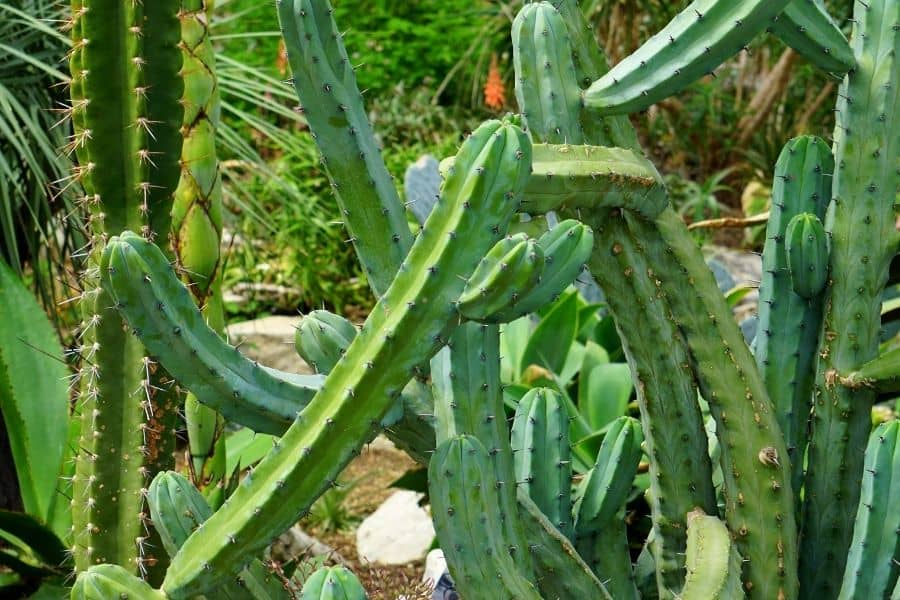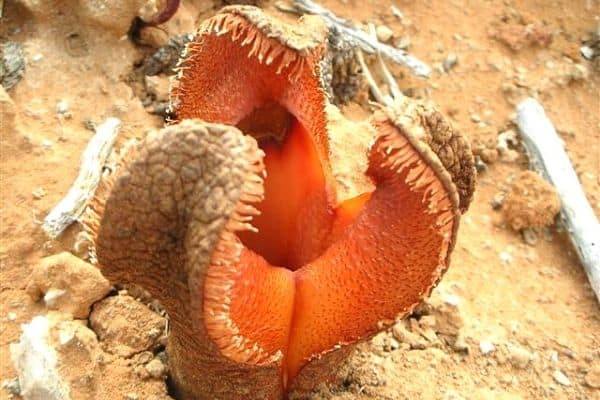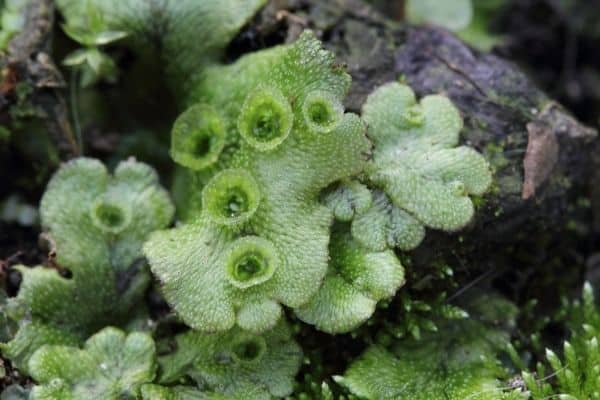
When you think of a plant, there is a big chance that you think of a plant that has a stem or a branch with leaves attached to it. But actually, there are a lot of plants that have no leaves. So which plants have no leaves?
The main job of a leaf is to make food for the plant in order to survive and grow healthy. Plants make their own food by performing photosynthesis in their leaves. This is a process that green plants use with the help of sunlight to synthesize nutrients from carbon dioxide and water.
If a plant has no leaves, it uses other ways to require the essential nutrients in order to grow healthy. Some plants, like parasitic plants, infiltrate the roots or stems of a healthy plant to 'steal' these nutrients.
Other plants, like cacti and bryophytes (mosses and liverworts) still make their own food with the help of photosynthesis. They do this from their stem or their 'organic body' (as bryophytes don't have stems).
There are actually many plants that don’t have leaves and they all fall in one of the following categories:
- Bryophytes (mosses and liverworts).
- Some cactus plants.
- Some parasitic plants.
Below are some examples of plants without leaves.
Contents
1. Hydnora africana

The Hydnora africana, also called Jakkalskos or Jackal Food is a parasitic plant and has no leaves. It ‘steals’ the food from other plants as a parasite will do.
This parasitic plant has special roots that will pierce the roots of healthy plants that are near the plant. By piercing the roots of the healthy plant the Hydnora will drain the nutrients that it needs.
Since it steals the essential nutrients from other plants, it doesn’t need to perform photosynthesis on its own and doesn’t require any leaves.
2. Opuntia

This cactus is also called the prickly pear because it has the shape of a pear with prickly spikes on it. As you can see in the picture above, it has no leaves. As you might know, in order for a plant to stay healthy and grow, it will perform photosynthesis and make its own food.
Normally this process happens in the leaves of the plant where there is a lot of chlorophyll (a pigment that will help with the process of photosynthesis)
Because the Opuntia has no leaves, the plant will perform photosynthesis in its stems. Hereby making its own food and surviving.
Most cacti don’t have traditional leaves because they naturally grow in an environment where it’s dry and hot.
To survive in these environments they need to store as much water for as long as possible. This is why cacti have thick stems, that are filled with water. If the cactus had normal leaves, the leaves would overflow with water which is not good for normal leaves.
Fun fact: Cacti exposed to the full sun have a denser covering of spines than those of the same species growing in partly shady conditions like in canyons or under large boulders. This is because the spines in the cactus provide shade and protect the plant against the burning sun.
3. Riccia

Photo by: BerndH
Riccia is a genus of liverworts. Liverworts are flowerless, spore-producing plants that naturally grow all around the world, but especially in tropical environments.
This plant grows naturally on rocks, riverbeds or fallen trees. It is also a gametophyte which means it has no roots, leaves, or stems.
The umbrella-like structures, which have grown out from tiny spores in the ground, perform photosynthesis on its own. This means they make their own food in order to survive.
While you often need a microscope to detect liverworts, the maximum size of the Riccia is 20mm (0,8 inches).
Liverworts are not directly important to humans but they provide food for animals, help with the decay of fallen trees, and they help break down rocks by their ability to retain lots of water.
4. Marchantia polymorpha

Photo by: Holger Casselmann
The Marchantia polymorpha is known as the common liverwort or umbrella liverwort and naturally grows all over the world, but mostly in tropical regions.
This thallose liverwort with rosette-like or flattened shape and grows with forked branches. In order to survive and grow it performs photosynthesis on its own.
According to Google, this plant grows up to 10cm long with a maximum width of 2cm.
5. Cuscuta

Photo by: Bernard DUPONT
The Cuscuta is a parasitic plant that steals the essential nutrients that it needs from other plants. It is also called the dodder and it naturally likes to grow in temperate and tropical regions all over the world.
Some dodder plants have very small leaves and others have no leaves at all.
After it has attached itself to a plant, it wraps itself all around the plant, Then, with the help of rootlike structure it will pierce the stem of the host (a healthy plant) and absorb the water or nutrients that it needs. After it has penetrated the healthy plant, the roots of the dodder that are in the soil, will die.
Now the Cuscuta has clamped itself to its host and can grow healthy and big. It can also grow towards other healthy plants that are near the plant and this way create a network of plants that it will leach nutrients and water from.
6. Anthoceros

Photo by: Jason Hollinger
Next on this list is the Anthoceros, which is a liverwort. It is also called the 'horned liverwort' or 'hornwort' because it has a horn-like shape.
This plant will only grow up to 1,5 cm in diameter. It usually grows on damp soils in lowlands across temperate regions in Europe and North America.
Because it's a liverwort it doesn't have leaves, roots nor stems.
The Anthoceros can make its own food by performing photosynthesis, it doesn't need to 'steal' essential nutrients from other plants (like a parasitic plant would).
7. Saguaro

The Saguaro, also known as Carnegiea gigantea, is a tree-like cactus that can grow over 40ft (12 meters) tall. It naturally grows in the Sonoran Desert in Arizona.
It has a very strong and big root system that is specialized in taking as much water from the soil as possible.
Just like other cacti, the Saguaro holds a lot of water in its stems to survive long periods of dryness.
Because this cactus has no leaves, photosynthesis is performed in the stem of the plant, which receives all of the sunlight.



Leave a Reply